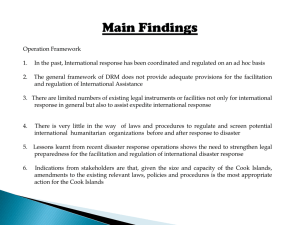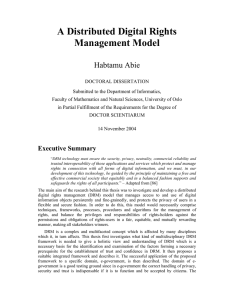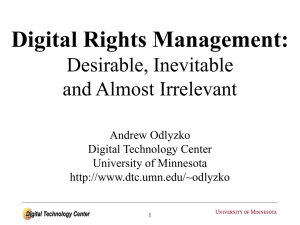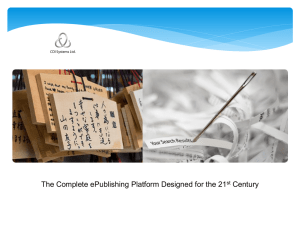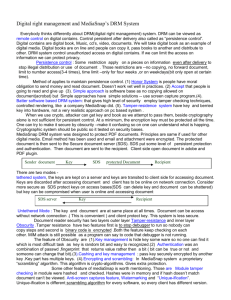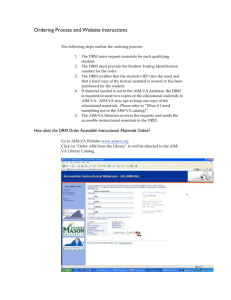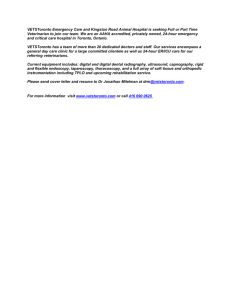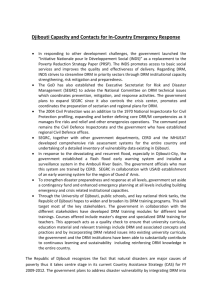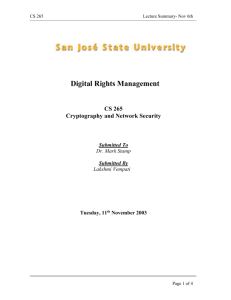Presenting DFA Concepts and Results for Executive Level Decision
advertisement
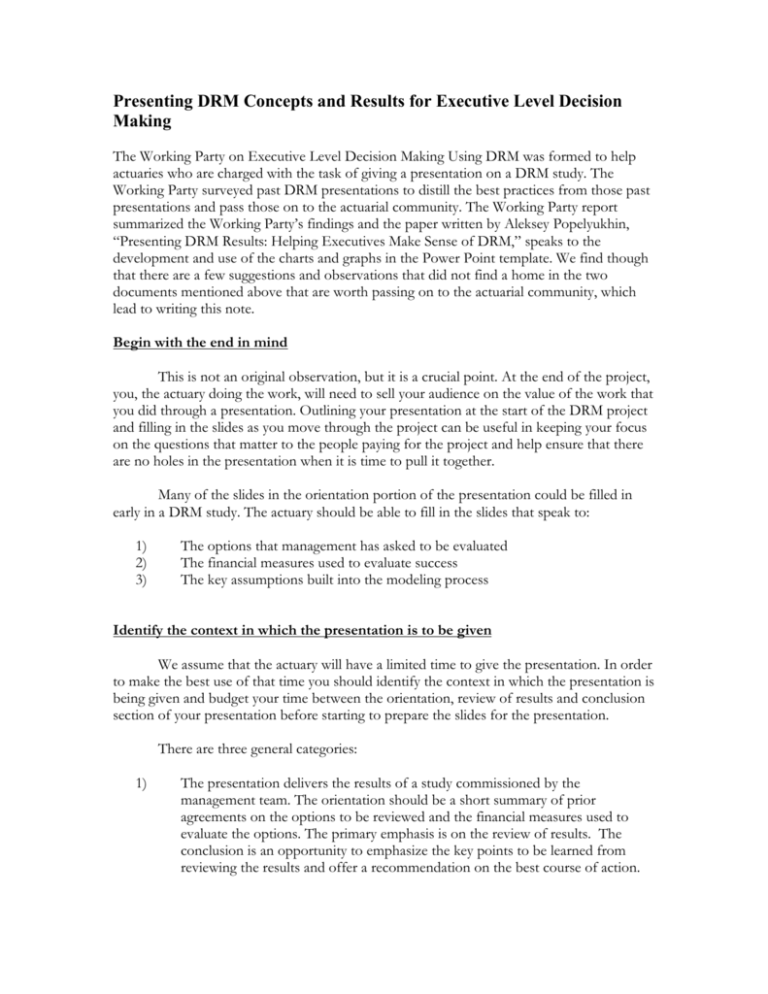
Presenting DRM Concepts and Results for Executive Level Decision Making The Working Party on Executive Level Decision Making Using DRM was formed to help actuaries who are charged with the task of giving a presentation on a DRM study. The Working Party surveyed past DRM presentations to distill the best practices from those past presentations and pass those on to the actuarial community. The Working Party report summarized the Working Party’s findings and the paper written by Aleksey Popelyukhin, “Presenting DRM Results: Helping Executives Make Sense of DRM,” speaks to the development and use of the charts and graphs in the Power Point template. We find though that there are a few suggestions and observations that did not find a home in the two documents mentioned above that are worth passing on to the actuarial community, which lead to writing this note. Begin with the end in mind This is not an original observation, but it is a crucial point. At the end of the project, you, the actuary doing the work, will need to sell your audience on the value of the work that you did through a presentation. Outlining your presentation at the start of the DRM project and filling in the slides as you move through the project can be useful in keeping your focus on the questions that matter to the people paying for the project and help ensure that there are no holes in the presentation when it is time to pull it together. Many of the slides in the orientation portion of the presentation could be filled in early in a DRM study. The actuary should be able to fill in the slides that speak to: 1) 2) 3) The options that management has asked to be evaluated The financial measures used to evaluate success The key assumptions built into the modeling process Identify the context in which the presentation is to be given We assume that the actuary will have a limited time to give the presentation. In order to make the best use of that time you should identify the context in which the presentation is being given and budget your time between the orientation, review of results and conclusion section of your presentation before starting to prepare the slides for the presentation. There are three general categories: 1) The presentation delivers the results of a study commissioned by the management team. The orientation should be a short summary of prior agreements on the options to be reviewed and the financial measures used to evaluate the options. The primary emphasis is on the review of results. The conclusion is an opportunity to emphasize the key points to be learned from reviewing the results and offer a recommendation on the best course of action. 2) 3) The presentation is part of a regular update to the management team on a financial statistic of interest. The orientation should be a minimal part of the presentation and may eventually be omitted in the interest of time as the presentations are repeated over time. If the results slides are consistent with slides from earlier time periods, you may be able to spend the minimum time with the results slides needed to reassure the audience that the results are in the range expected from prior presentations. The presentation is intended to sell the management team on your group’s ability to give them insight into the problem at hand. More time should be budgeted on the orientation section than in the first two cases to ensure that the terminology is clear and labels used later in the results sections will be understood. This may, in turn, limit the time available for the results and conclusion sections and dictate using the simplest possible charts and graphs to depict the results. State the agenda for the meeting at the outset of the presentation. You are about to lead your audience on a journey that may have taken you several months to complete, but needs to be condensed to an hour. Letting them know the path you are going to lead them on will help ensure that they are with you at the end. State that simplifying assumptions and limits placed on the modeling effort in a positive manner. Completing the modeling effort in reasonable amount of time, that is to say within the budget dictated by staffing or the amount that the company is willing to pay for the project, often means making simplifying assumptions. An example would be modeling interest rates with a single factor model vs. two-factor model, when the emphasis is on the reduction in variability of company results via catastrophe reinsurance. The single factor model can be presented as adequate to model interest rates given the problem at hand while you have chosen to concentrate on modeling issues more directly related to catastrophe loss issues. This is an opportunity to position yourself as a pragmatic problem solver as opposed to another academically oriented actuary. Avoid slides that go into detail on technical issues For example, a slide in the orientation section may list the tail value at risk applied to annual operating results as the financial measure used to evaluate risk among the options. Mentioning the financial measure that will be displayed later in the results section helps set the stage for those slides. A slide delving into the mathematical definition of tail value at risk in a presentation to senior management on the results of your study is not recommended. You should be prepared to answer on the fly technical questions such as what is the definition of the tail value of risk, if that concept is part of the presentation. Thinking up analogies before the presentation to help the audience with technical concepts is a good strategy. Being ready with a simple response to a complex question will help keep the presentation flowing and reassure the audience that you have thought through the technical issues underlying the results you are presenting. Limit the number of options and scenarios to be evaluated A parameter scenario is a general set of assumptions that defines the economic environment the company will operate in during the future. An option refers to a choice to be made in how the company operates, which includes items like resource allocation or entering a new geographic area or line of business. At the end of the project, you will need to compare and contrast the options the management team has on how to direct the company’s operations. Presenting more than a handful of options by comparing and contrasting them can be difficult at best. If you compound the number of comparisons between the options with multiple scenarios, the graphs and charts tend to become so cluttered as to confuse rather than enlighten the audience. Limiting the number of scenarios and options to be evaluated goes back to the idea of beginning with the end in mind. The choice to limit the number of scenarios and options to be presented could be made at the beginning of the DRM study. Don’t minimize the conclusion slide The purpose of the presentation and DRM study is to help the management team make a decision. If you can synthesize the results of the study in a few bullet points, you are providing the help they requested.

